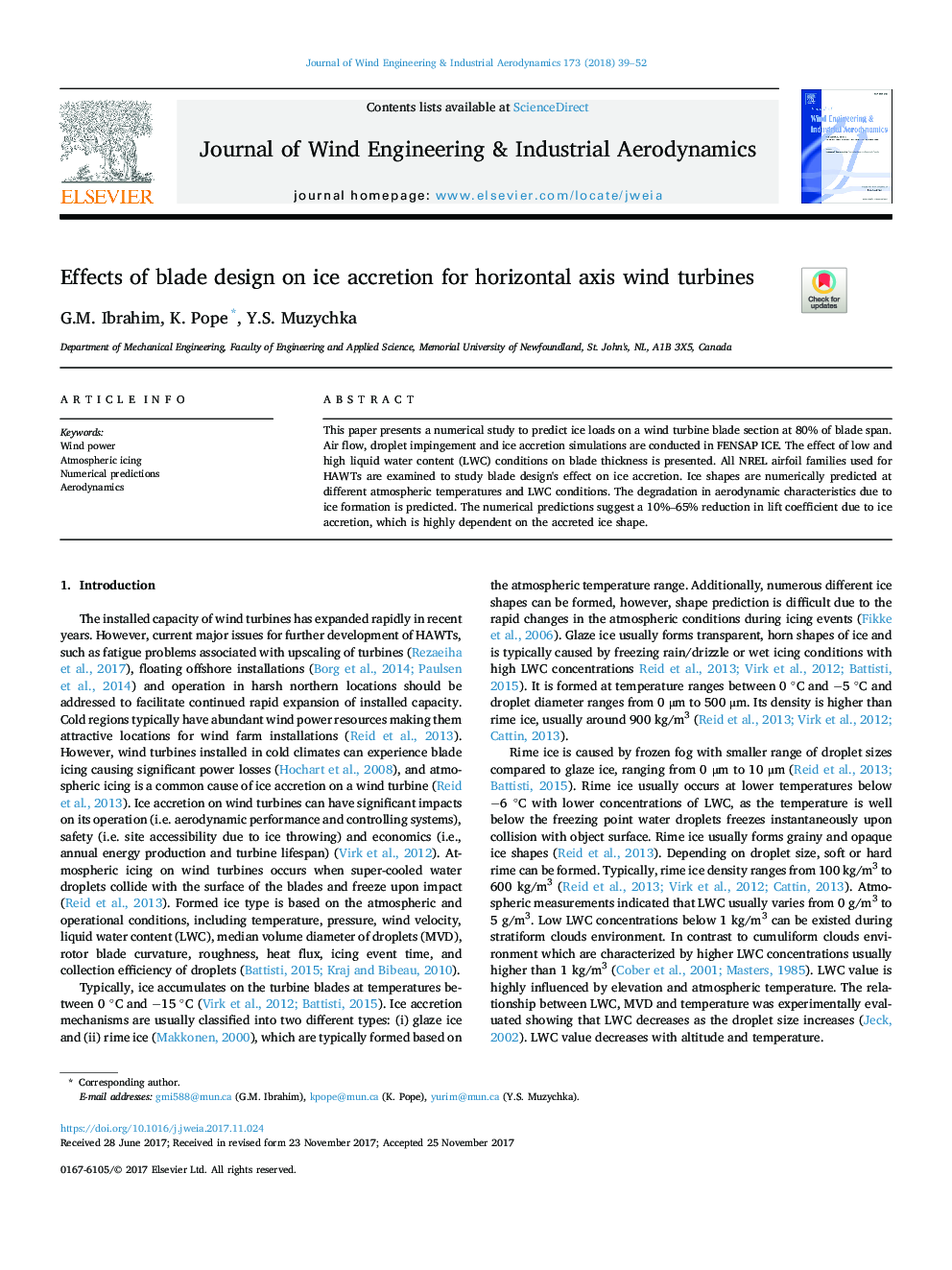| Article ID | Journal | Published Year | Pages | File Type |
|---|---|---|---|---|
| 6757147 | Journal of Wind Engineering and Industrial Aerodynamics | 2018 | 14 Pages |
Abstract
This paper presents a numerical study to predict ice loads on a wind turbine blade section at 80% of blade span. Air flow, droplet impingement and ice accretion simulations are conducted in FENSAP ICE. The effect of low and high liquid water content (LWC) conditions on blade thickness is presented. All NREL airfoil families used for HAWTs are examined to study blade design's effect on ice accretion. Ice shapes are numerically predicted at different atmospheric temperatures and LWC conditions. The degradation in aerodynamic characteristics due to ice formation is predicted. The numerical predictions suggest a 10%-65% reduction in lift coefficient due to ice accretion, which is highly dependent on the accreted ice shape.
Related Topics
Physical Sciences and Engineering
Energy
Renewable Energy, Sustainability and the Environment
Authors
G.M. Ibrahim, K. Pope, Y.S. Muzychka,
